Thus, the increase in SOD observed in the hepatic tissue is beneficial, because it suggests an adequate response to this superoxide excess. Conversely, treatment with U. tomentosa resulted in a reduction of the SOD levels in the tumour 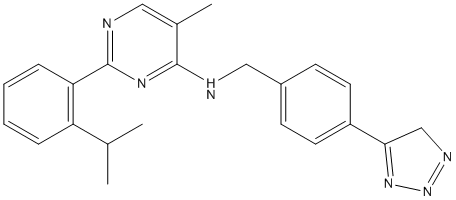 tissue, which in turn constitutes an advantageous result as well, as it indicates that the tumour cells are being left more susceptible to the effects of the superoxide anion. This apparent selectivity was also observed for Cat levels. The importance of Cat in the neoplastic scenarios has long been appreciated, as various studies have demonstrated that increased activity of this enzyme in tumour cells constitute a protection mechanism against cell death induced by reactive oxygen species, and that by inhibiting this enzyme, the neoplastic cells become once more vulnerable to this outcome. Our findings indicate that Cat levels were reduced in the tumour tissue and increased in the liver, both these results occurring simultaneously and due to the treatment with the U. tomentosa BHE extract. Indeed, we may be witnessing a protective effect on the liver associated with a further exposure of the tumour cells to ROS-induced necrosis/apoptosis. Meaning to further characterize this observation, the protein expressions of both catalase and SOD-1 were assessed by Western blot. As no statistically significant differences were found among the experimental groups, it seems appropriate to assume that the treatments could be increasing the individual output of these enzymes, resulting in a greater overall activity despite equivalent expression rates. In addition to this hypothesis, the lack of differences in the expression of SOD-1 does not exclude an eventual effect upon the expression of the other two isoforms of this enzyme, namely SOD2 and SOD3. According to Valko et al., the lower Cat activity induced by various tumours has been attributed to an increase in TNF-a level, which reduces hepatic Cat activity. The BHE extract and its BuOH fraction expressively reduced the TNF-a level on the liver homogenates of tumour-bearing rats when compared to control, perhaps contributing to a recovery of the hepatic Cat activity in these animals. The mensuration of this cytokine in liver homogenates also indicates an anti-inflammatory activity of both the BHE extract and its BuOH fraction. Interestingly, however, we observed an effective reversal of TNF-a to baseline values as a result of the former treatment, leading us to conclude that, regarding this parameter, the BHE extract is MK-2206 Akt inhibitor indeed more effective than its BuOH fraction. The CHCl3 fraction exhibited a mild reduction of this cytokine, which seems natural considering the recognized anti-inflammatory properties of isolated pentacyclic FDA-approved Compound Library oxindole alkaloids. On the whole, reduction of the cytokine TNF-a is bound to ameliorate some hallmarks of this tumour, such as cachexia. The tumour levels of TNF-a were quite lower when compared to those of the liver. This is probably caused by the histological differences between these tissues; with the latter containing TNF-a-secreting Kupffer cells and the former encompassing mainly fibroblasts that do not secrete TNF-a. Regarding the tumour production of this cytokine, while the same tendencies as those of the liver were observed, no statistical significances were found.
tissue, which in turn constitutes an advantageous result as well, as it indicates that the tumour cells are being left more susceptible to the effects of the superoxide anion. This apparent selectivity was also observed for Cat levels. The importance of Cat in the neoplastic scenarios has long been appreciated, as various studies have demonstrated that increased activity of this enzyme in tumour cells constitute a protection mechanism against cell death induced by reactive oxygen species, and that by inhibiting this enzyme, the neoplastic cells become once more vulnerable to this outcome. Our findings indicate that Cat levels were reduced in the tumour tissue and increased in the liver, both these results occurring simultaneously and due to the treatment with the U. tomentosa BHE extract. Indeed, we may be witnessing a protective effect on the liver associated with a further exposure of the tumour cells to ROS-induced necrosis/apoptosis. Meaning to further characterize this observation, the protein expressions of both catalase and SOD-1 were assessed by Western blot. As no statistically significant differences were found among the experimental groups, it seems appropriate to assume that the treatments could be increasing the individual output of these enzymes, resulting in a greater overall activity despite equivalent expression rates. In addition to this hypothesis, the lack of differences in the expression of SOD-1 does not exclude an eventual effect upon the expression of the other two isoforms of this enzyme, namely SOD2 and SOD3. According to Valko et al., the lower Cat activity induced by various tumours has been attributed to an increase in TNF-a level, which reduces hepatic Cat activity. The BHE extract and its BuOH fraction expressively reduced the TNF-a level on the liver homogenates of tumour-bearing rats when compared to control, perhaps contributing to a recovery of the hepatic Cat activity in these animals. The mensuration of this cytokine in liver homogenates also indicates an anti-inflammatory activity of both the BHE extract and its BuOH fraction. Interestingly, however, we observed an effective reversal of TNF-a to baseline values as a result of the former treatment, leading us to conclude that, regarding this parameter, the BHE extract is MK-2206 Akt inhibitor indeed more effective than its BuOH fraction. The CHCl3 fraction exhibited a mild reduction of this cytokine, which seems natural considering the recognized anti-inflammatory properties of isolated pentacyclic FDA-approved Compound Library oxindole alkaloids. On the whole, reduction of the cytokine TNF-a is bound to ameliorate some hallmarks of this tumour, such as cachexia. The tumour levels of TNF-a were quite lower when compared to those of the liver. This is probably caused by the histological differences between these tissues; with the latter containing TNF-a-secreting Kupffer cells and the former encompassing mainly fibroblasts that do not secrete TNF-a. Regarding the tumour production of this cytokine, while the same tendencies as those of the liver were observed, no statistical significances were found.
Author: neuroscience research
This most intriguing was observed for the SOD enzymatic system which is responsible for the conversion of the superoxide anion
To the original BHE extract containing all groups of compounds. According to our chemical analyses, the CHCl3 fraction contains alkaloids, triterpenes and 7-deoxyloganic acid, the latter also found in the BuOH fraction, along with antioxidant substances such as phenolic glycosides and anthocyanidins. These observations are further supported by the DPPH results, which point out the BHE extract as the most effective free radical scavenger. Significant antioxidant activity in the BuOH fraction was detected, while the CHCl3 fraction had no antioxidant activity whatsoever. The results of this assay are in accordance to the aforementioned composition of these three substances and are adequate for the testing of our hypothesis. Expressive reduction in tumour weight and volume was observed in W256 tumour-bearing rats treated with both BHE extract and BuOH fraction. This restriction of tumour development was directly related with TWS119 increase in the survival rate, as shown in the figure 8B. All and two thirds of the rats treated with the BHE extract and BuOH fraction, respectively, survived for the tested period, while none of the animals treated with the CHCl3 fraction nor those who received vehicle survived. These results clearly show that by fractioning U. tomentosa extracts, active compounds that present anti-neoplastic effects are also separated, as well as constitute evidence of the importance of the oxidative stress modulation as part of the action mechanisms of this plant. The results obtained with the in vivo oxidative stress parameters also confirmed these findings. SOD and LPO measures in the liver and tumour tissue demonstrated a major beneficial effect of the U. tomentosa BHE extract and BuOH fraction, while the CHCl3 fraction consistently Tofacitinib JAK inhibitor produced negligible results. It is noteworthy that the BHE extract was significantly more successful than its BuOH fraction in heightening hepatic SOD levels, which were already increased in the control group as compared to the baseline group as a natural reaction to the considerable oxidative stress caused by the neoplastic process. Regarding Cat measures in both tissues, only the BHE extract achieved a statistically significant effect as compared to control, effectively increasing hepatic Cat levels to similar values as those of the baseline group. Despite the evident lower levels of GSH in tumour tissue found in the BHE extract and BuOH fraction-treated groups as compared to control, only those of the BHE extract were statistically significant. This is a favourable result, taking into account the important role that GSH plays in such cellular processes as the transport of amino acids, the synthesis of proteins and DNA, and even cellular detoxification. It seems appropriate to establish that the biological activities of U. tomentosa are indeed enhanced by the synergic action of its various components. It is remarkable to acknowledge that U. 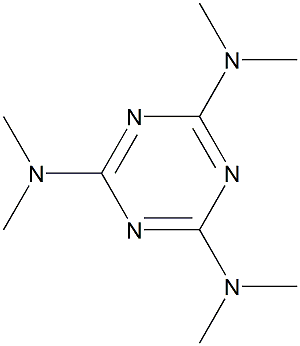 tomentosa seems to exert a degree of selectivity over its site of action, an observation which supports our previous findings. Indeed, in various parameters we observed that the BHE extract had different, if not opposite effects in the liver and tumour tissue. Even more important is the fact that this selectivity resulted in an apparent protection of the hepatocytes, which came along with a simultaneous attack to the neoplastic cells.
tomentosa seems to exert a degree of selectivity over its site of action, an observation which supports our previous findings. Indeed, in various parameters we observed that the BHE extract had different, if not opposite effects in the liver and tumour tissue. Even more important is the fact that this selectivity resulted in an apparent protection of the hepatocytes, which came along with a simultaneous attack to the neoplastic cells.
Evaluating the anti-neoplastic effects of fraction composed roughly of alkaloids and a fraction composed
Thus, the present study aimed to evaluate the anti-neoplastic effects of two different fractions obtained from a hydroethanolic extract of U. tomentosa: one R428 composed roughly of pentacyclic oxindole alkaloids and triterpene glycosides, and the other composed of most of the substances other than alkaloids present in the original extract, namely, phenolic glycosides and other antioxidant substances. Additionally, we compared the effects 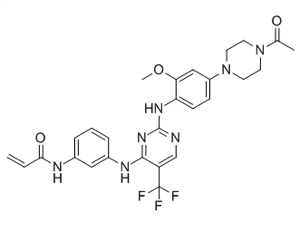 of both fractions to those of the original hydroethanolic extract. The chosen in vivo tumour model was the Walker-256 carcinosarcoma in rats, which was the same model used in our previous experiments. Currently, considerable attention is being granted to its anti-neoplastic potential as well. Various preparation methods and administration regimes have been tested against tumour lineages in vitro and in vivo, with promising results. Our current efforts follow the wake of some investigators, that experimented with fractions and isolated compounds of U. tomentosa extracts with the aim to attribute the observed pharmacological activities to a specific substance or group of substances. Nowadays, it is known that Uncaria tomentosa accumulates alkaloids, triterpenes and other classes of compounds, including phenolic glycosides, flavonoids and proanthocyanidins. Among the most abundant alkaloids found in this plant, there is a mixture of pentacyclic oxindole stereoisomers that differ in configuration at chiral centres in the positions 3, 7, 15, 19 and 20. In attempting to explain the anti-neoplastic effects of U. tomentosa, researchers have demonstrated interest in this group of substances, based on previous observations that gave them credit for its anti-inflammatory activity. However, it is important not to overlook the fact that cancer is a vast group of diseases that may vary substantially among them. Hence, the number of LY2109761 possible clinical scenarios is equally diverse, with different outcomes among tumour lineages, individuals affected, and even throughout the various locales affected by the neoplastic process in each individual. Pilarski and colleagues demonstrated awareness of this wide range of possible deviations by cross-testing extracts of U. tomentosa of different alkaloid content against several tumour lineages, both in vivo and in vitro. Interestingly, their results suggest that preparations with greater alkaloid concentrations do not necessarily achieve the best anti-neoplastic effects. As possible explanations for their results, the authors suggest an apparent selectivity of the fractions with higher alkaloid levels for some tumour lineages, low water solubility of isolated alkaloids and issues regarding the IC50 measures. Taking into account the previous observations of our research team, including the importance of oxidative stress in the W256 in vivo tumour model, and the relevant synergism between antioxidant and cytotoxic components in the anti-neoplastic effects of U. tomentosa, we propose yet another hypothesis: U. tomentosa fractions that are alkaloid-rich, but otherwise devoid of most other substances present in the original extract may perhaps leave out and disregard the antioxidant effects of such other substances, along with the beneficial synergic effects that they could be providing.
of both fractions to those of the original hydroethanolic extract. The chosen in vivo tumour model was the Walker-256 carcinosarcoma in rats, which was the same model used in our previous experiments. Currently, considerable attention is being granted to its anti-neoplastic potential as well. Various preparation methods and administration regimes have been tested against tumour lineages in vitro and in vivo, with promising results. Our current efforts follow the wake of some investigators, that experimented with fractions and isolated compounds of U. tomentosa extracts with the aim to attribute the observed pharmacological activities to a specific substance or group of substances. Nowadays, it is known that Uncaria tomentosa accumulates alkaloids, triterpenes and other classes of compounds, including phenolic glycosides, flavonoids and proanthocyanidins. Among the most abundant alkaloids found in this plant, there is a mixture of pentacyclic oxindole stereoisomers that differ in configuration at chiral centres in the positions 3, 7, 15, 19 and 20. In attempting to explain the anti-neoplastic effects of U. tomentosa, researchers have demonstrated interest in this group of substances, based on previous observations that gave them credit for its anti-inflammatory activity. However, it is important not to overlook the fact that cancer is a vast group of diseases that may vary substantially among them. Hence, the number of LY2109761 possible clinical scenarios is equally diverse, with different outcomes among tumour lineages, individuals affected, and even throughout the various locales affected by the neoplastic process in each individual. Pilarski and colleagues demonstrated awareness of this wide range of possible deviations by cross-testing extracts of U. tomentosa of different alkaloid content against several tumour lineages, both in vivo and in vitro. Interestingly, their results suggest that preparations with greater alkaloid concentrations do not necessarily achieve the best anti-neoplastic effects. As possible explanations for their results, the authors suggest an apparent selectivity of the fractions with higher alkaloid levels for some tumour lineages, low water solubility of isolated alkaloids and issues regarding the IC50 measures. Taking into account the previous observations of our research team, including the importance of oxidative stress in the W256 in vivo tumour model, and the relevant synergism between antioxidant and cytotoxic components in the anti-neoplastic effects of U. tomentosa, we propose yet another hypothesis: U. tomentosa fractions that are alkaloid-rich, but otherwise devoid of most other substances present in the original extract may perhaps leave out and disregard the antioxidant effects of such other substances, along with the beneficial synergic effects that they could be providing.
The transmembrane unit built into protein sequences to stabilize membrane proteins and to facilitate
Which can be robust to environmental perturbations as in the cases of transporters and receptors, or be flexible to the immediate microenvironments such as the cases of glycoenzymes and extracellular proteins. Using ordinary LC-MS, we demonstrated here the power of a high-throughput proteomics in studies of post-translational modification from a systematic viewpoint, and we hope that the obtained N-glycoproteome of E14.Tg2a will help a better understanding of the molecular background of this important cell line. For the last couple of decades, researchers have experimented several types and methods of extraction to observe a wide array of pharmacological properties, including limitation of the epithelial cell death in response to oxidant stress, amelioration of the oedema via inhibition of cyclooxygenase-1 and 22, cytoprotection by means of free radical scavenging, reduction of oxidative stress and direct inhibition of the TNF-a production, to name a few. Most of these researchers have attributed the biological effects of U. tomentosa to the pentacyclic oxindole Folinic acid calcium salt pentahydrate alkaloids present in this plant. This idea is supported by the apparently restricted occurrence of these alkaloids within this genus, as well as by studies performed with alkaloids isolated from the plant rather than with brute extracts. Indeed, reference to the use of alkaloids isolated from U. tomentosa goes as far back as to 1985, when Wagner and colleagues observed that four out of six oxindole alkaloids present in this plant caused a pronounced enhancement of phagocytosis, both in vitro and in vivo. More recently, studies with several of these isolated alkaloids yielded reports on their antioxidant, immunomodulant and even anti-neoplastic properties. Other studies, however, have demonstrated that compounds different than the oxindole alkaloids may be at least partially responsible for the 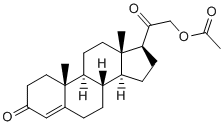 observed effects. Among the most cited such substances are triterpenes, quinovic acid glycosides, and others hitherto not identified. Yet a third hypothesis, albeit older, suggests that the LOUREIRIN-B anti-inflammatory properties of UT may be related to a synergic combination of compounds. Currently, growing attention is being paid to the anti-neoplastic potential of U. tomentosa. Indeed, various extracts and compounds derived from this plant have been found to alter or downright inhibit the growth and proliferation of several different tumour lineages including human neuroblastoma and glioma, HL60 promyelocytic leukaemia and MCF7 breast cancer, among others. Also, our team of researchers published one of the first studies of the anti-neoplastic properties of U. tomentosa on a solid tumour in vivo. In addition to observing an important reduction of the tumour mass and volume as a result of the treatment with a hydroethanolic extract of the plant, we noted a remarkable modulation of the oxidative stress caused by the neoplastic process, both in the liver and in the tumour of the subjects. Our conclusion was that the modulation of the redox processes would probably play a pivotal role in the antiproliferative effects of the plant, perhaps via alteration of one or more metabolic pathways. It is only logical to assume that all these anti-neoplastic properties should be due to the pentacyclic oxindole alkaloids, which have been shown to exert the anti-inflammatory properties mentioned above.
observed effects. Among the most cited such substances are triterpenes, quinovic acid glycosides, and others hitherto not identified. Yet a third hypothesis, albeit older, suggests that the LOUREIRIN-B anti-inflammatory properties of UT may be related to a synergic combination of compounds. Currently, growing attention is being paid to the anti-neoplastic potential of U. tomentosa. Indeed, various extracts and compounds derived from this plant have been found to alter or downright inhibit the growth and proliferation of several different tumour lineages including human neuroblastoma and glioma, HL60 promyelocytic leukaemia and MCF7 breast cancer, among others. Also, our team of researchers published one of the first studies of the anti-neoplastic properties of U. tomentosa on a solid tumour in vivo. In addition to observing an important reduction of the tumour mass and volume as a result of the treatment with a hydroethanolic extract of the plant, we noted a remarkable modulation of the oxidative stress caused by the neoplastic process, both in the liver and in the tumour of the subjects. Our conclusion was that the modulation of the redox processes would probably play a pivotal role in the antiproliferative effects of the plant, perhaps via alteration of one or more metabolic pathways. It is only logical to assume that all these anti-neoplastic properties should be due to the pentacyclic oxindole alkaloids, which have been shown to exert the anti-inflammatory properties mentioned above.
Resolution of ER stress and inflammatory processes will have wide ranging contributions
Given its intriguing position at the crossroads of these two processes, we were interested in investigating the expression and regulation of SelS. In this study we show that only one of the human SelS mRNA variants can encode a Folinic acid calcium salt pentahydrate selenoprotein of 189 amino acids. The other transcript encodes a truncated protein of 187 amino acids that lacks selenocysteine. Additionally, elements in the 39UTR of the selenoprotein-encoding mRNA positively and negatively influence Sec insertion into SelS, and provide another mechanism to regulate the production of these two protein isoforms. The ability of 39UTR elements to influence the incorporation of Sec underscores the importance of context when examining functional RNA elements such as the SECIS. We also show that in addition to being an ER-resident protein, the subcellular localization of endogenous SelS includes enrichment at perinuclear speckles adjacent to the Golgi, which was previously unknown. The color of the base indicates the likelihood of its involvement in a base pairing interaction. The probability scale runs from blue to red. In addition, positions where compensatory mutations occur in the sequence set are indicated on the structure with black circles around the nucleotides. SL1 displays a high probability of forming a stem-loop structure, as the majority of the structure registers in the red range. The only exception is the base pair at the top of the stem, which likely reflects a tolerance for the helix to breathe at this position. For SL2, the 50 nucleotides immediately downstream from the SECIS element were used to generate the alignment. The location of the SECIS in each sequence was defined using SECISearch. Figure 5A shows the LOUREIRIN-B RNAalifold structure annotated sequence alignment for this region. This region of the SelS 39UTR retains its AU-rich character across the sequence set but it is more difficult to discover sequence covariance in the region, particularly with the inclusion of non-mammalian species. Despite the sequence noise, Figure 5B shows the high-probability formation of a stem-loop structure in this region. The likelihood of the base pair interactions across the predicted stem is reinforced by the detection of compensatory mutations 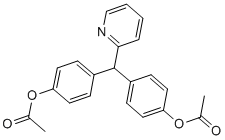 for each position, as indicated by black circles around the nucleotides involved. As the set of sequences is heavily weighted to mammals, we also conducted a pairwise analysis using the Ciona and Xenopus sequences in the combined locARNA/RNAalifold analysis. This analysis also predicts the formation of a stem-loop of similar size and length. Thus, the ability to form a stem-loop structure downstream of the SECIS element is not restricted to mammals. While the dampening effect of the 39UTR on the SelS SECIS is from downstream sequences, we were still interested in examining the upstream element SL1 for possible effects on Sec insertion. One could envision SL1 exerting a positive effect on Sec insertion by promoting ribosome pausing during translation. Conversely, SL1 could have a negative impact on selenoprotein synthesis by preventing the recoding machinery from accessing the UGA codon. The relative distance between this stem-loop and the UGA codon is very different in the endogenous and heterologous contexts. In its native context, SL1 is 9 nucleotides downstream of the UGA codon, whereas in the luciferase reporter there are several hundred nucleotides between them.
for each position, as indicated by black circles around the nucleotides involved. As the set of sequences is heavily weighted to mammals, we also conducted a pairwise analysis using the Ciona and Xenopus sequences in the combined locARNA/RNAalifold analysis. This analysis also predicts the formation of a stem-loop of similar size and length. Thus, the ability to form a stem-loop structure downstream of the SECIS element is not restricted to mammals. While the dampening effect of the 39UTR on the SelS SECIS is from downstream sequences, we were still interested in examining the upstream element SL1 for possible effects on Sec insertion. One could envision SL1 exerting a positive effect on Sec insertion by promoting ribosome pausing during translation. Conversely, SL1 could have a negative impact on selenoprotein synthesis by preventing the recoding machinery from accessing the UGA codon. The relative distance between this stem-loop and the UGA codon is very different in the endogenous and heterologous contexts. In its native context, SL1 is 9 nucleotides downstream of the UGA codon, whereas in the luciferase reporter there are several hundred nucleotides between them.